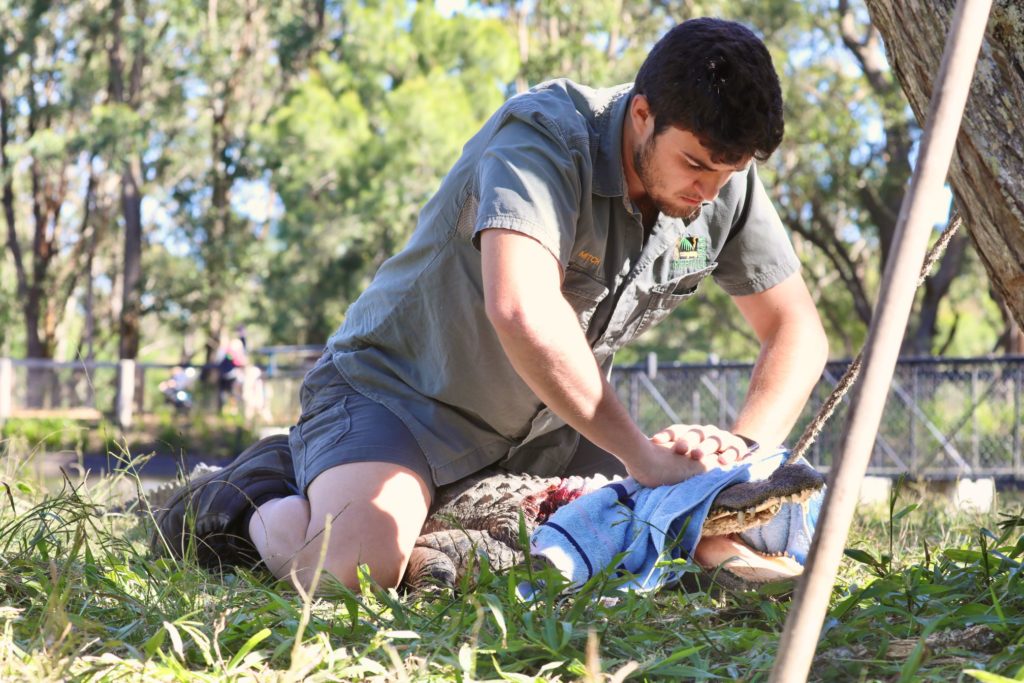Doing health checks on more than 40 alligators is not a job for the faint-hearted, but keepers at the Australian Reptile Park recently undertook the dangerous and mammoth task of catching and health-checking their population of American alligators before the winter season begins.
During the winter months, the alligators enter a state of brumation, where their metabolism begins to slow down, their activity decreases and they cease feeding due to the low water temperatures.
Before brumation occurs, the team needs to give every alligator a health check to ensure they’re in good condition, especially after breeding season.
Operations Manager Billy Collett said performing a health check on a massive adult alligator is no simple task.
“The process involves keepers wrangling the alligators and restraining them as they check their muscular condition, dental health and overall physical condition since they’ve just come out of breeding season,” he said.
“To make our job a little bit easier, before we let them go, we also applied a small amount of non-toxic paint onto the top of their heads to make sure we don’t catch the same alligator twice and ensure every alligator has been checked over.

“During breeding season, both males and females can often sustain injuries from either fighting to breed with the best female or protecting the nesting site.
“If any of the alligators have sustained injuries or they’re simply not in the best health and they enter their brumation period, it becomes an even more difficult task to catch that gator and check it over.
“It was non-stop action out there on the lagoon and there were definitely a few close calls, but overall, this health check was really positive.
“Every single alligator is in great condition as we head into the winter season, and we can’t wait for the weather to warm back up again so we can all see our alligators back in action during our Alligator Feeding Show.”
The Australian Reptile Park has the largest population of American alligators living in Australia and visitors can watch them being fed during the warmer months – generally from September until April.
Source:
Australian Reptile Park



